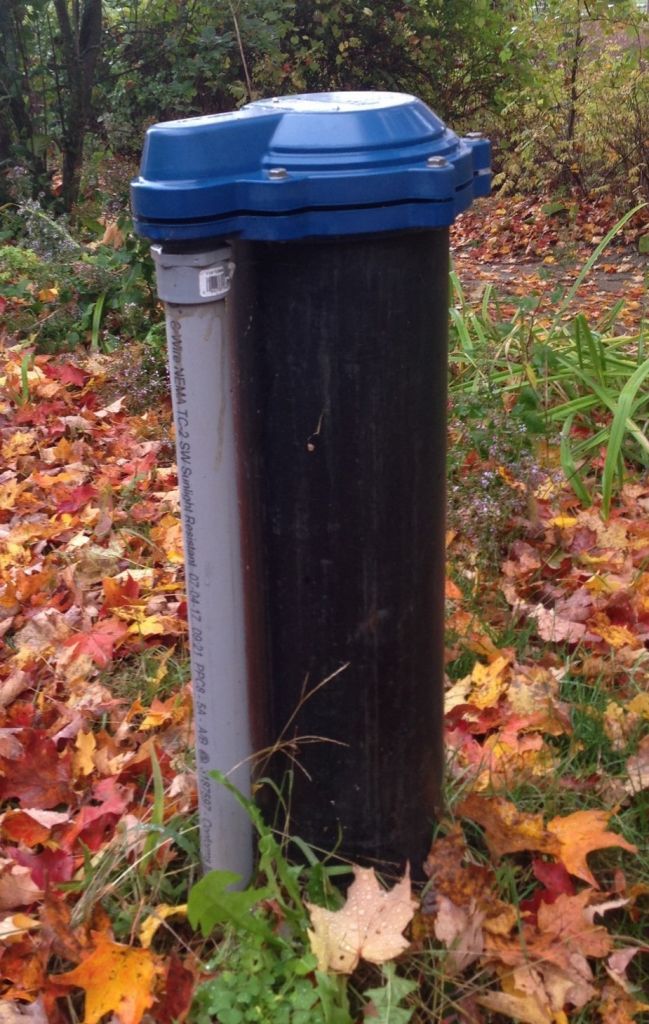The cap covering a well may be a small part of the overall household water well system, but it is an extremely important one.
A properly installed well cap separates potential pollutants from your drinking water. The cap, which should be sealed tightly at all times, keeps out everything from liquid contaminants to bugs that can crawl inside a well and wreak havoc.
Following is more information about the well cap, a small device that can make a big difference in the water quality of your household water well system.
What is a well cap and what does it do?
The well cap is the cover on top of the well casing that sticks out of the ground. It serves many purposes. Most caps, which are usually aluminum or a thermoplastic, include a vented screen so that the pressure difference between the inside and outside of the well casing may be equalized when water is pumped from the well. However, the cap’s main function is to keep contaminants out of the water supply.

What type of contaminants does the well cap keep out of the well?
A properly sealed well cap protects against all types of contamination. It is the first line of protection against nonpoint source pollution, which constitutes the majority of groundwater contamination. Nonpoint source pollution includes runoff of pesticides and herbicides, soil erosion, airborne dust and debris, and elements from the street.
Well caps also keep out insects, such as earwigs, which prefer a dark, damp environment to nest, wasps and bees that frequently build nests in wells, spiders (spiders love the moist well environment), and small animals such as rodents and snakes. All of these can cause major problems in a well. Bacteria levels can rise from their droppings, and sometimes the bugs, snakes and rodents themselves can get trapped in the wells, die, and decompose in the well water.
Does the well cap make my water safe?
It really helps by keeping out undesirable sources of contaminants from the surface. Surface water can encounter many types of pollutants and transport them. These are not always easily detected by taste or smell. A properly sealed well cap is a safeguard in preventing those contaminants from penetrating the household water supply.
Having your well tested is the surest way to determine that the water is safe. Even if your well cap fits tightly on your well and your water tastes fine, the water well system should be given a checkup by a contractor every year.
Is there anything else I can do to ensure the water is safe?
Check the well cap from time to time. Make sure that it is sealed tightly, that the screen or filter on the vent is intact and clean, and look for cracks and evidence of tampering. Make sure any conduit connections with the cap are also connected properly and in good condition. If your well cap has a lock, check to see if the lock has been tampered with. Also, practice safe water habits. Do not plant landscaping or pile mulch around the well cap. If you absolutely must use herbicides or pesticides in landscape maintenance, do not use these around the well cap. If you landscape your yard, make sure there is not a low area near the well where rain water could collect. Rain water can carry pollutants that can seep into a well. And when working with oil and gasoline, or mixing herbicides or pesticides, do so over concrete and use absorbent pads so spills can’t be washed off and seep into the ground.
Is it OK to cover the well cap?
If you don’t like the look of the exposed casing and well cap sticking out of the lawn you can camouflage it. There are companies that manufacture plastic covers designed to look like landscaping boulders. Often called “mock rocks,” the products are lightweight, hollow, and durable to the elements. The covers, which come in a variety of sizes and shapes and are growing in popularity, have been used to cover everything from well heads to septic access ports and risers, tanks, utility panels, and water garden devices.


